Text
The EU Corporate Sustainability Due Diligence Directive (CSDDD) explained

The EU Corporate Sustainability Due Diligence Directive (CSDDD) refers to an EU regulation that requires EU and non-EU companies to conduct environmental and human rights due diligence across their operations, subsidiaries and value chains.
In this article, we will discuss how CSDDD may impact your business and society, what should companies do to prepare for compliance and other more important aspects under CSDDD’s scope.
What is the EU’s proposed Corporate Sustainability Due Diligence Directive (CSDDD)?
The CSDDD is a piece of major EU legislation designed to enforce the protection for human rights and the environment throughout the EU and globally supply chain of businesses.
On 23 February 2022, the CSDDD was first adopted by the European Commission. In December 2023, a provisional deal outlined the directive’s scope, clarified liabilities for non-compliant companies, defined penalties, and completed the list of rights and prohibitions that companies should respect.
On April 24th, 2024, the European Parliament formally adopted the Corporate Sustainability Due Diligence Directive (CSDDD), setting into law obligations for large companies with significant activities in the EU to conduct human rights and environmental due diligence in their own operations and across their chains of activities.
By 2027, companies should be ready to comply with the directive, with larger corporations likely to be the first to adhere.
Learn more about CSDDD: Corporate sustainability due diligence: Council and Parliament strike deal to protect environment and human rights
What are the obligations for companies?
The due diligence directive lays down rules on obligations for large companies regarding actual and potential adverse impacts on the environment and human rights for their business chain of activities which covers the upstream business partners of the company and partially the downstream activities, such as distribution or recycling.
The directive also lays down rules on penalties and civil liability for infringing those obligations; it requires companies to adopt a plan ensuring that their business model and strategy are compatible with the Paris agreement on climate change.
The CSDDD establishes a corporate due diligence duty. To comply with the CSDDD, companies must identify, end, prevent, mitigate, and account for negative human rights and environmental impacts in the company’s own operations, subsidiaries and value chains.
The proposed legislation gives business directors specific obligations to integrate due diligence into corporate strategy and consider the human rights, climate change, and environmental consequences of their decisions.
Large companies will also be required to align their business strategies with the Paris Agreement goal of limiting global warming to 1.5 °C – meaning that these large companies must have a plan for reaching net zero.
Which companies need to comply with CSDDD?
The agreement fixes the scope of the directive on large companies that have more than 500 employees and a net worldwide turnover over €150 million. For non-EU companies it will apply if they have over €150 million net turnover generated in the EU, three years from the entry into force of the directive. The Commission will have to publish a list of non-EU companies that fall under the scope of the directive.

The CSDDD will directly apply to both EU and non-EU companies.
EU companies:
With more than 500 employees and a net worldwide turnover of more than EUR 150 million in the last financial year.
With more than 250 employees and a net worldwide turnover of more than EUR 40 million, provided at least 50% of this turnover was generated in a high-impact sector.
Non-EU companies:
Generate a net turnover of more than EUR 150 million in the EU in the last financial year.
Generate a net turnover of more than EUR 40 million in the EU, provided at least 50% of worldwide turnover was generated in a high-impact sector.
Small and medium enterprises (SMEs) are not directly in the scope of this proposal.
When to Implement CSDDD?
The CSDDD will be enforced with a phased-in approach based on company size and turnover, starting three years from entry into force, and grouped as follows:
3-year period for companies with over 5000 employees and EUR 1500 million turnover (from 2027)
4-year period for those with over 3000 employees EUR 900 million turnover (from 2028)
5-year period for companies with over 1000 employees and EUR 450 million turnover, and for companies having entered into franchising or licensing agreements with over EUR 80 million turnover in the EU and EUR 22.5 million in royalties (from 2029).
What actions should the companies take to comply due diligence?
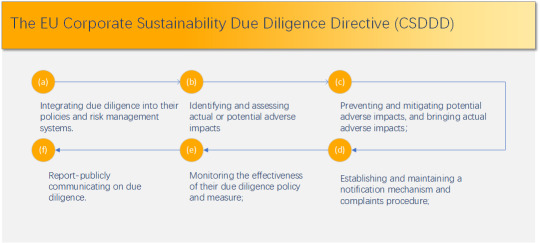
Source: CSDDD compromise 15 March 2024 (https://data.consilium.europa.eu/doc/document/ST-6145-2024-INIT/en/pdf)
The CSDDD sets requirements on companies to conduct risk-based human rights and environmental due diligence by carrying out the following actions:
(a) Integrating due diligence into companies policies and risk management systems
Companies integrate due diligence into all their relevant policies and risk management systems and have in place a due diligence policy that ensures a risk-based due diligence.
Companies update their due diligence policy without undue delay after a significant change occurs, and review and, where necessary, update it at least every 24 months.
(b) Identifying and assessing actual or potential adverse impacts
Companies take appropriate measures to identify and assess actual and potential adverse impacts arising from their own operations or those of their subsidiaries and, where related to their chains of activities, those of their business partners.
Member States shall ensure that, where it is not feasible to prevent, mitigate, bring to an end or minimise all identified adverse impacts at the same time to their full extent, companies prioritise adverse impacts identified pursuant to Article 6 for fulfilling the obligations
For the purposes of identifying and assessing the adverse impacts, where appropriate, quantitative and qualitative information, companies are entitled to make use of appropriate resources, including independent reports and information gathered through the notification mechanism and complaints procedure.
(c) Preventing and mitigating potential adverse impacts
Companies take appropriate measures to prevent, or where prevention is not possible or not immediately possible, adequately mitigate potential adverse impacts that have been, or should have been;
Companies shall be required to take the following appropriate measures, where relevant:
Where necessary, due to the nature or complexity of the measures required for prevention, without undue delay develop and implement a prevention action plan, with reasonable and clearly defined timelines for the implementation of appropriate measures and qualitative and quantitative indicators for measuring improvement;
Seek contractual assurances from a direct business partner that it will ensure compliance with the company’s code of conduct and, as necessary, a prevention action plan;
Make necessary financial or non-financial investments, adjustments or upgrades, such as into facilities, production or other operational processes and infrastructures
Provide targeted and proportionate support for an SME which is a business partner of the company;
To increase the company’s ability to prevent or mitigate the adverse impact, in particular where no other measure is suitable or effective.
As regards potential adverse impacts that could not be prevented or adequately mitigated by the appropriate measures, the company may seek contractual assurances with an indirect business partner;
The contractual assurances shall be accompanied by the appropriate measures to verify compliance. For the purposes of verifying compliance, the company may refer to independent third-party verification, including through industry or multi-stakeholder initiatives.
Bringing actual adverse impacts to an end.
Companies take appropriate measures to bring actual adverse impacts that have been, or should have been;
Where the adverse impact cannot immediately be brought to an end, Member States shall ensure that companies minimise the extent of such an impact;
(d) Notification mechanism and complaints procedure
Companies provide the possibility for people and organisations to submit complaints to them where these people or organisations have legitimate concerns regarding actual or potential adverse impacts with respect to the companies' own operations, the operations of their subsidiaries or the operations of their business partners in the companies’ chains of activities.
Member States shall ensure that the complaints may be submitted by:
Natural or legal persons who are affected or have reasonable grounds to believe that they might be affected by an adverse impact, and the legitimate representatives of such persons on behalf of them;
Trade unions and other workers’ representatives representing individuals working in the chain of activities concerned;
Civil society organisations active and experienced in the areas related to the environmental adverse impact that is the subject matter of the complaint.
Member States shall ensure that companies establish a fair, publicly available, accessible, predictable and transparent procedure for dealing with complaints;
Member States shall ensure that companies establish an accessible mechanism for the submission of notifications by persons and organisations.
(e) Monitoring
Member States shall ensure that companies carry out periodic assessments of their own operations and measures, those of their subsidiaries and, where related to the chains of activities of the company, those of their business partners, to assess the implementation and to monitor the adequacy and effectiveness of the identification, prevention, mitigation, bringing to an end and minimisation of the extent of adverse impacts.
(f) Communicating
Member States shall ensure that companies report on the matters covered by CSDDD.
Large companies and listed SMEs will have to report on:
Environmental matters
Human rights
Anti-corruption measures
Diversity issues
They will be required to publish detailed information on how their business affects society and the economy and vice versa.
The new rules will:
Equip investors to take decisions that benefit both people and the environment
Increase companies’ accountability
Ease the transition to a sustainable economy
Conclusion
The Corporate Sustainability Due Diligence Directive (CSDDD) represents a significant step towards sustainable and responsible business practices. By ensuring compliance with this directive, companies can mitigate risks, enhance their reputation, and contribute to a more sustainable and equitable global economy.
As businesses navigate the complexities of CSDDD, proactive measures, stakeholder engagement, and transparent reporting will be key to not only meeting regulatory requirements but also achieving long-term success in a rapidly evolving business landscape.
By prioritizing sustainability and ethical practices, companies can position themselves as leaders in the market and build a resilient foundation for the future.
The Directive will come into force from the 20th day after it has been published in the Official Journal of the European Union (expected end of May 2024). As a result, the 2027 implementation date is relatively tight for those large companies with extensive, multi-national value chain that span multiple countries. Companies should therefore start to prepare their regulatory responses if they have not already done so.
Check out our Sustainability and Supply Chain Assurance services, or contact us for more support.
0 notes
Text

What actions should the companies take to comply due diligence?
The CSDDD sets requirements on companies to conduct risk-based human rights and environmental due diligence by carrying out the following actions:
(a) Integrating due diligence into companies policies and risk management systems
(b) Identifying and assessing actual or potential adverse impacts
(c) Preventing and mitigating potential adverse impacts
(d) Notification mechanism and complaints procedure
(e) Monitoring
(f) Communicating
0 notes
Text

Are you currently sourcing products from India for your business needs?
In India, the failure rate for imported products is relatively higher than in other countries, quality control remains a significant challenge for importers and the need for more rigorous quality control processes among many manufacturers.
Product inspections are essential quality control measures to ensure that goods meet specified standards and requirements before reaching the hands of consumers.
TESTCOO is your third-party inspection company in India for all your quality control needs. Click to learn more about the types of product inspections and guidelines for booking a product inspection in India.
0 notes
Text
Guidelines for Product Inspection in India

TESTCOO is your third-party inspection company in India for all your quality control needs. With our QC team in India’s key markets, TESTCOO product inspection services allow the buyers to check that their product specifications and quality, functionality and performance requirements have been met.
TESTCOO offers different types of product inspection and quality control services in India which can be conducted from the initial production setup stage, right through to the pre-shipment and container loading stages.
Learn more about our product inspection services in India: Quality Control Inspection and Audit in India
Product Inspection in India
India's manufacturing sector encompasses a wide range of industries, including textiles, consumer goods, electronics, machinery, automotive, pharmaceuticals and chemicals. The country's diverse industrial landscape caters to both domestic consumption and export markets, offering opportunities for various businesses across different sectors.
While there are many benefits making India a sought-after sourcing destination worldwide, navigating the complex supplier landscape, manufacturing processes, and regulatory environments can take time and money. In India, the failure rate for imported products is relatively higher than in other countries, quality control remains a significant challenge for importers and the need for more rigorous quality control processes among many manufacturers. Product inspections are essential quality control measures to ensure that goods meet specified standards and requirements before reaching the hands of consumers. There are various types of product inspections tailored to different stages of production, industry-specific needs, and quality assurance objectives. Here are some common types of product inspections:
Initial Production Check (IPC):
Conducted at the early stages of production, typically after the initial production samples are ready.
Aimed at verifying that raw materials, components, and production processes meet specified requirements and standards.
Helps identify potential issues and deviations from quality standards before mass production begins, allowing for timely corrective actions.
During Production Inspection (DUPRO) or Inline Inspection:
Carried out during the manufacturing process when a certain proportion of the production is completed.
Focuses on monitoring product quality, detecting defects, and ensuring compliance with production standards and specifications.
Enables proactive intervention to address quality issues and maintain consistency in product quality throughout the production process.
Pre-shipment Inspection (PSI) or Final Random Inspection (FRI):
Conducted once the entire production is completed and goods are ready for shipment.
Involves a comprehensive assessment of finished products to verify conformity with pre-established quality criteria, specifications, and regulatory requirements.
Helps identify any remaining defects, deviations, or non-compliance issues before goods are shipped to customers, minimizing the risk of costly returns or rejections.
Loading Supervision:
Carried out at the factory or warehouse during the loading of goods into shipping containers or vehicles.
Ensures proper handling, packaging, and loading procedures are followed to prevent product damage, contamination, or loss during transit.
Verifies the accuracy of the quantity, assortment, and condition of goods loaded for shipment, reducing the risk of discrepancies or disputes upon delivery.
Supplier Evaluation and Audit:
Assessments conducted to evaluate the capabilities, performance, and compliance of suppliers or manufacturing partners.
Involves on-site inspections, audits, and assessments of facilities, processes, quality management systems, and adherence to regulatory requirements.
Aims to ensure supplier reliability, product consistency, and adherence to ethical, social, and environmental standards.
Each type of product inspection serves a specific purpose and contributes to overall quality assurance efforts in the manufacturing process. By implementing a combination of these inspections, companies can minimize quality risks, maintain product integrity, and enhance customer satisfaction. Contact us to get a quote.
Learn more about the types of inspections in India: What is Quality Control – A complete guide

DOWNLOAD A PRODUCT INSPECTION SAMPLE REPORT IN INDIA
TESTCOO provides the final inspection reports detailing any defects found so that you can take immediate corrective action on time.
Check a Report
Guidelines for booking a Product Inspection in India
The main objective of a production inspection is to assure all products manufactured by the suppliers in India meet specifications and quality standards, approved samples and procedures.
While inspections are challenging, having the process run smoothly is achievable with proper preparation. Here is what buyers need to know to take full advantage of product inspections and booking it when you set up the importing and booking a quality inspection service.
AQL TABLE
Audits will be conducted using AQL (Acceptance Quality Level ) ISO 2859-1 Table.
Among the quality control methods, inspection is the most-frequently used service and AQL standard is the most common way to select a sample for visual or appearance review.
AQL refers to the maximum number of defective items that could be considered to accept during the random sampling of pre-shipment inspection. To reduce risk before accepting a shipment, AQL sampling is a practical and effective approach to undertake quality assurance on an order of produced items.
Generally, for clothing items 1.5%, 2.5%, and 4.0% AQL values are used depending on the type and price of the clothing.
Sampling with AQL yields results based on statistics, from which apparel importers can make more informed decisions about accepting or rejecting the goods.
Single Sampling Plans for Normal Audit (General Audit Level II)

Click here to learn: How to Read AQL Table?
Guidelines for Suppliers
Ensure that the products to be inspected are all located in the same facility
Ask your supplier to confirm an inspection date in advance. The inspection should be performed at least 5 working days prior to the shipment date
Test equipment/facilities should be available to enable inspectors to properly evaluate function, performance, and overall compliance with specifications at the time and place of audit
Must assign a competent person to communicate, coordinate, evaluate, assist, and take the necessary corrective actions that may arise during the inspection procedure
Must have a proper environment (proper light, clean table) in order to conduct the inspection
Must have packing list, spec sheet, purchase order, approved sample of the articles to be audited
All the cartons must be sealed, sorted by article and be held in a visible clean neat area
Get in touch with us to learn more about our prices.Get a Quote
Guidelines for Quality Inspection Agency ( TESTCOO Inspection )
Promptly confirm the inspection date and location and avoid delays
Clarify inspection requirements like sampling method, work instructions, special requirements, etc
Send inspection files requiring the detailed packing (color, ratio and quantity per carton), required packing depends of the quantity, style, and design
Document requiring measurements of the final products
Specify your checklists and inspection protocols
Align with the inspector on what defects they can and cannot accept, classified as minor, major and critical
TESTCOO's Quality Control Services in India
TESTCOO has been present in India as a well-known third-party inspection agency since 2017. Our nationwide network of qualified and highly trained inspectors and engineers allows us to offer professional quality solutions with early production, during production or final pre-shipment inspection.
In India, TESTCOO offers product inspection and auditing services to both local and international clients across production hubs, including Delhi, Jaipur, Panipat, Daman, Moradabad, Ahmedabad, Jodhpur, Mumbai, Tirupur, Bangalore, Noida, Mumbai, Kolkata and other regions.
We specialize in product quality inspection and factory audit for all types of apparel and textile, fabric, shoes, furniture, kitchenware and tableware, toys, lighting, home appliances, consumer electronics and medical device.
To learn more about our product quality inspection service in India and preparation for your inspection checklist, contact our experts at [email protected] to discover the solutions.Contact Us
0 notes
Text
TESTCOO is your third-party inspection company in India for all your quality control needs. With our QC team in India’s key textile markets, TESTCOO product inspection services allow the buyers to check that their product specifications and quality, functionality and performance requirements have been met.
TESTCOO offers different types of product inspection and quality control services in India which can be conducted from the initial production setup stage, right through to the pre-shipment and container loading stages.
Learn more about the product inspections in India: Quality Control Inspection and Audit in India
0 notes
Text
What is Sample Checking in Quality Inspection?
Sample checking is a key tool in the field of quality management, which aims to ensure that the products produced or the raw materials used meet pre-established quality standards and specifications. This is a vital step for newly manufactured products before they are put into mass production.
Click to learn more about the objectives of checking samples, the benefits it offers to businesses and the key checks conducted during the inspection.
0 notes
Video
youtube
Apparel Standards and Regulations in the US - A Guide to Compliance
0 notes
Text
Sell clothes in America? What is required for adult and children apparel to keep quality assurance? The CPSC is a federal government agency charged with protecting the public from unreasonable risks of injury or death associated with the use of consumer products under the agency's jurisdiction.
The CPSIA requires that adult apparel and children's sleepwear must comply with relevant standards, substance restrictions, and other rules before importing or selling a product.
0 notes
Text
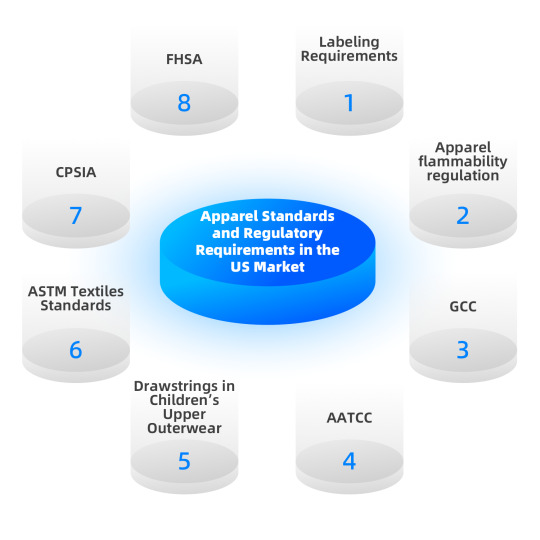
Import to or sell in the US are required to test the product in accordance with the CPSC’s regulations for apparel and issue a General Certificate of Conformity (GCC) that provides evidence of the product’s compliance.
Learn more: https://www.testcoo.com/en/blog/apparel-standards-and-regulations-in-the-us
0 notes
Text
Wearing apparel manufactured, imported, and sold in the United States is subject to a range of standards and regulations concerning labeling requirements, fire safety standards, chemicals, and heavy metals restrictions. Manufacturers and importers are both responsible for ensuring that their apparel comply with all applicable product safety standards in the US.
0 notes
Text
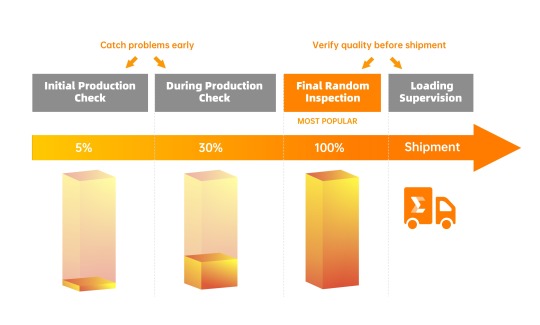
Quality inspection checks for quality and identifies ways to minimize manufacturing costs, reduce scrap losses and mitigate causes of defective work. There are mainly 4 types of inspection in quality control assess the quality of products, ensuring consistent production processes and effective control systems:
Initial Production Check (IPC)
During Production Check (DUPRO)
Final Random Inspection (FRI)
Loading Supervision (LS)
These four types of inspection is carried out at a different stage of product manufacturing process. Based on your specific requirements and industry, you may find that one or all of these four inspection types are of the essence.
0 notes
Text
What is quality control? According to the ISO 2859 standard, quality inspection involves activities such as testing, gauging, examining, or measuring one or more product characteristics. Quality inspection can help companies determine if their products comply with marketing and quality standards.

What is Quality Inspection?
Quality inspection is a process of ensuring that products or services meet specified requirements and standards before they are delivered to customers or released into the market. It involves evaluating, verifying and testing items for defects, deviations, or non-conformities that may affect their performance, safety, reliability, and usability.
Quality inspectors usually carry out on the basis of a checklist developed by third-party inspection companies or buyers. The results of the inspection is then compiled into a report, that indicate whether or not the product conform to the specifications.
An effective quality management solution can enhance product quality, streamline quality processes and workflows reduces the time and resources, and help ensure compliance with industry regulations, standards, and best practices, reducing the risk of non-compliance penalties and legal issues.
0 notes
Text
GB/T 43587-2023 is a product standard issued by China specifically for footwear used by older people. This standard likely outlines specifications, requirements, and guidelines for the design, manufacturing, and testing of footwear intended for older individuals.
GB/T 43587-2023 ‘Footwear for older people’ was released on December 28, 2023, and will be officially implemented on July 1, 2024
On December 28, 2023, the State Administration for Market Regulation and the Standardization Administration of the People's Republic of China (PRC) issued product standard GB/T 43587-2023 for ’Footwear for Older People,’ which will become effective on July 1, 2024. GB/T 43587-2023 is the first edition of this standard. It applies to footwear, including boots, intended for general use by older individuals.
0 notes
Video
youtube
9 Important Steps in a Pre-Shipment Inspection Procedure
There are 9 important steps in a Pre-Shipment Inspection procedure that you should know when shipping to ascertain the quality, quantity, and volumetric size of newly manufactured goods.
Read more: https://www.testcoo.com/en/blog/9-important-steps-in-a-pre-shipment-inspection-procedure
0 notes
Text
According to IMARC Group, the global toys market size reached US$ 183.0 Billion in 2023. Consumers all over the world need to be confident that the toys they buy for children are of high quality and are safe, whether from harmful chemicals, or design faults that could cause injury.

Toy certification is to harmonizes and establishes the crucial safety standard of toys, including special safety requirements in regard to their mechanical and physical properties, flammability, chemical, endurance and performance. These products must meet all the requirements established by law before being introduced to the market, sold or used.
When selling toys in markets around the world, it is important to know the certifications required for your toys to enter each market. In this article, we will take a look at some major markets: the European Union, the United Kingdom, the United States Brazil, China, Indonesia, and Japan.
0 notes
Text
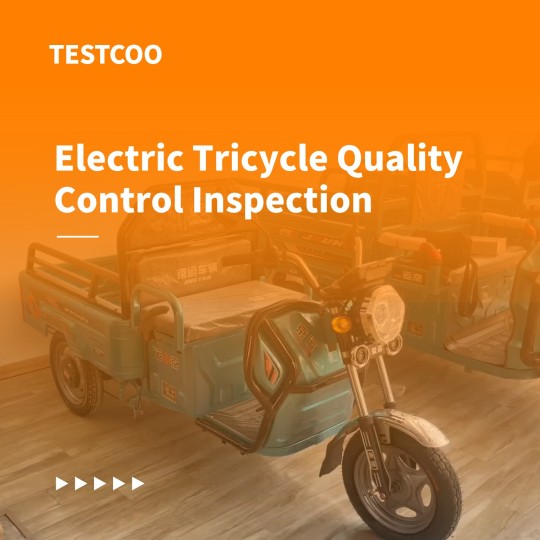
Buy hot selling China manufacturing electric cargo tricycle? TESTCOO teams work with you throughout the global market access process, ensuring that all aspects of product compliance, approval, and certification are covered. Please reach out to our experts at [email protected] to learn more.
https://www.testcoo.com/en
0 notes
Text
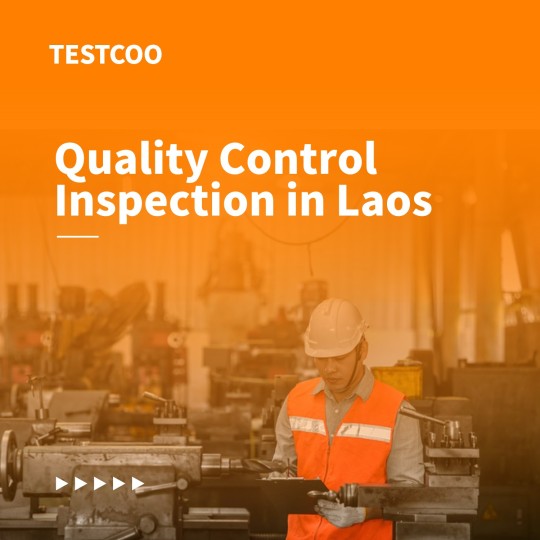
Buy from Laos? At TESTCOO, we know the complexities of sourcing from Laos and are here to assist you with our comprehensive quality control solutions and inspection service to meet your specific needs and budget. Please reach out to us at [email protected] now.
0 notes